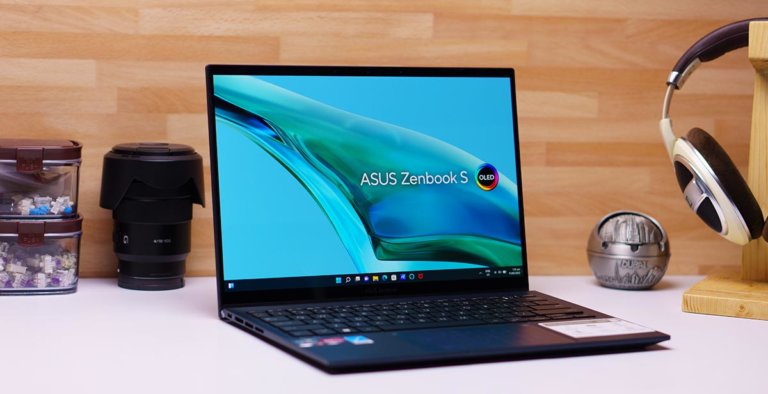
The ASUS ZenBook S 13 is one of the brand’s flagship ultraportable now based on AMD’s Ryzen platform. Its 2022 version now comes with AMD Ryzen 6000 series CPUs and LPDDR5 RAM while retaining the usual ZenBook implements like an impressive 13.3-inch OLED display and a thin chassis.
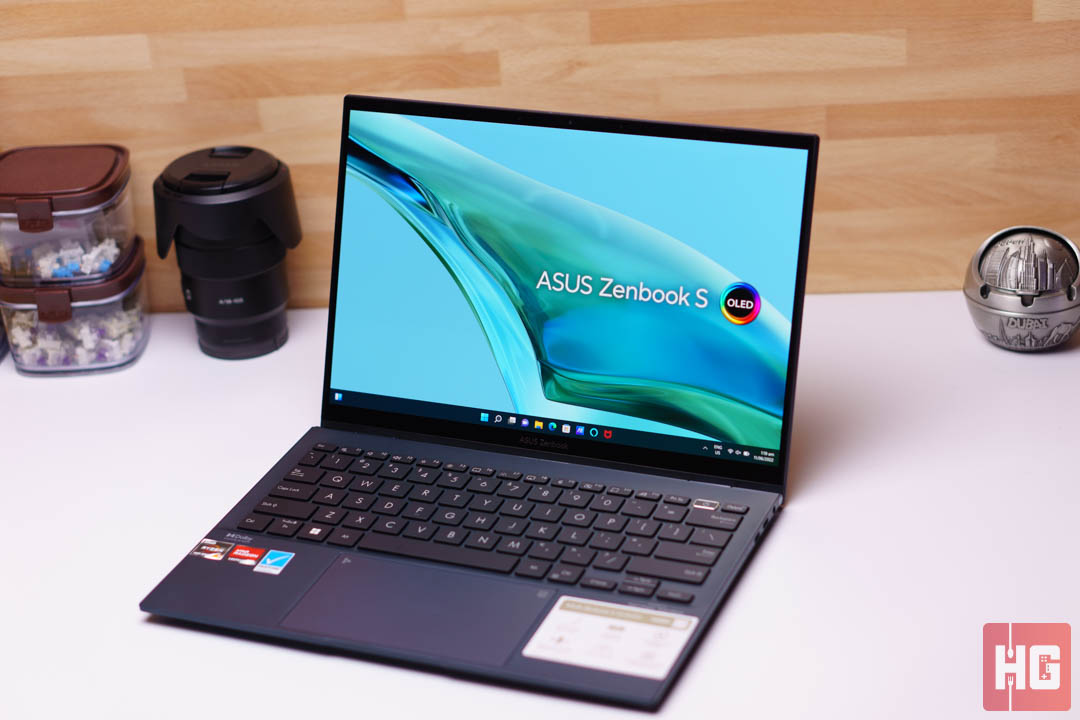
| CPU | AMD Ryzen 5 6600U, Ryzen 7 6800U |
| GPU | AMD Radeon Graphics |
| OS | Windows 11 |
| RAM | Up to 16GB LPDDR5 |
| Display | 13.3-inch OLED, 2880 x 1800, 100% DCI-P3, HDR True Black 500, Pantone Validated, Touch Screen Optional |
| Storage | Up to 1TB PCIe 4.0 NVMe SSD |
| I/O Ports | 3x USB 3.2 Gen2 Type-C, 1x 3.5mm Combo Jack |
| Connectivity | WiFi 6E, Bluetooth 5.2 |
| Battery | 67Whr, 4-Cell Li-Ion, 65W USB PD Charging |
| Audio | Built-In Speaker, Built-In Microphone, Smart Amp, Harman/Kardon, Cortana and Alexa Support |
| Others | Up to 1080p Webcam, |
| Dimensions | 296.7 x 210.5 x 14.9mm |
| Weight | Up to 1.10kg |
| Colors | Ponder Blue, Aqua Celadon, Refined White, Vestige Beige |
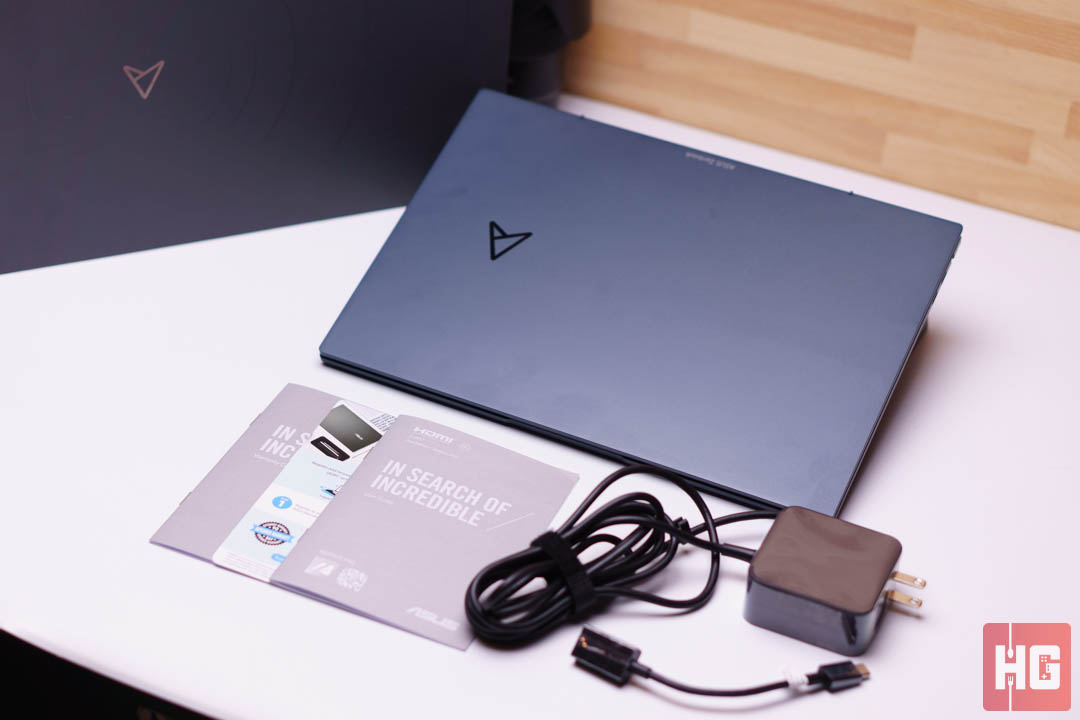
The ASUS ZenBook S 13 OLED (2022) is encased in a premium dark box worthy of the lineup. Inside are the notebook itself, a 65W USB Type-C power adapter, a Type-C to Type-A adapter, and documentation. Users can convert portions of the box into a laptop stand in case they don’t have one.

The notebook has a slim design with the lid bearing the brand’s 30th anniversary logo instead of the vanilla ASUS engraving. We actually prefer the minimalist logo instead of a name, which gives the notebook additional class over other ultraportables in the market.
The chassis is made out of aluminum and has a with a textured, matte finish. The notebook is incredibly portable measuring only 297.7 x 210.5mm. Weight is just a smidge over 1kg making it the laptop to have if you want to pack lightly on a trip.
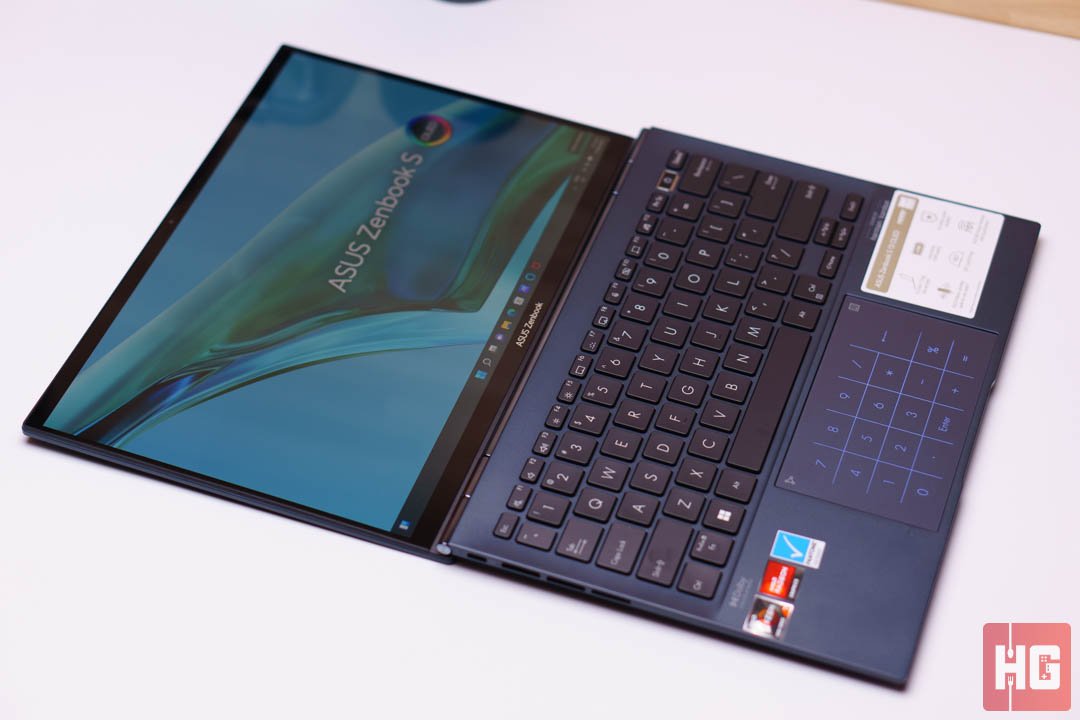
The device has the ASUS ErgoLift hinge that raises the laptop’s keyboard profile when the lid is open for an angled typing experience. The display can lay flat on surfaces so users can easily collaborate with colleagues or clients across them.
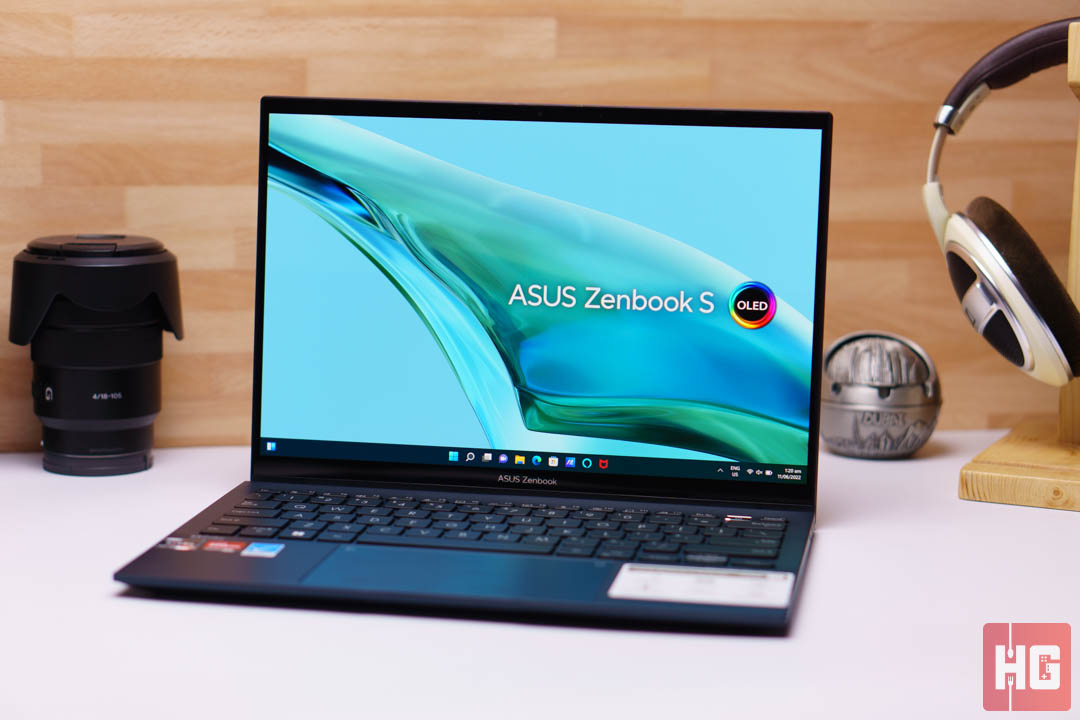
The ASUS ZenBook 13 S 13 OLED (2022) sports a 13.3-inch 2880 x 1800 OLED touch display. It is slightly smaller than the ZenBook 14 variants thus the brand is able lighten the notebook. A smaller display doesn’t mean lower color performance, however, as ASUS promises 100% DCI-P3 coverage on the panel.
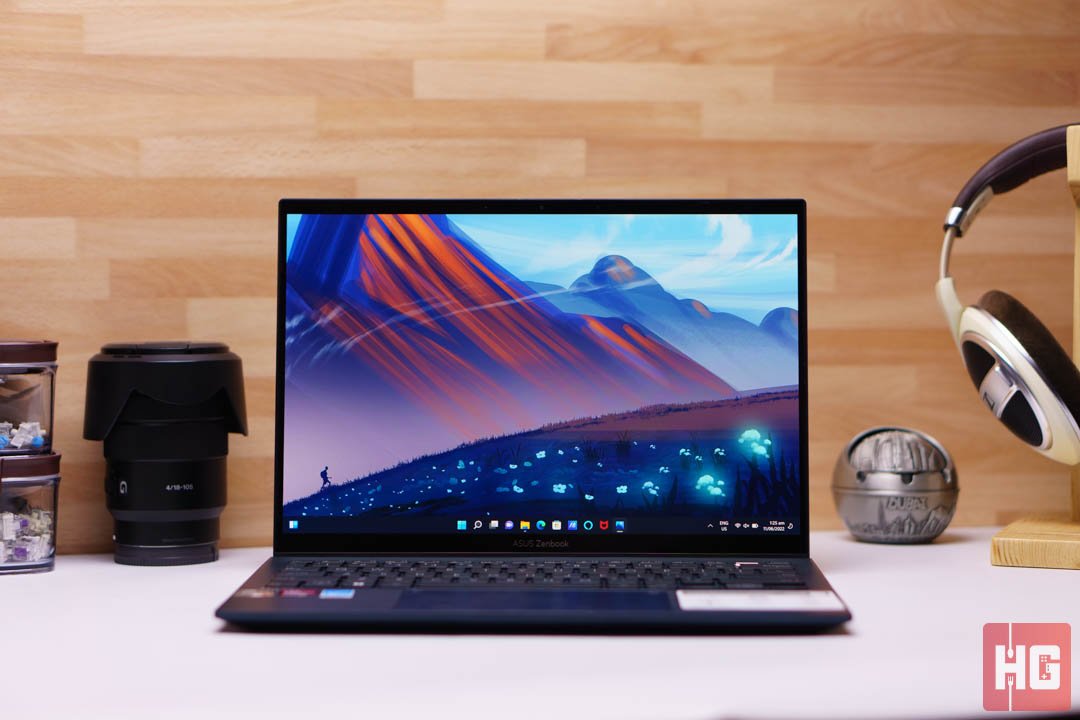
The display has minimal bezels at the sides and has a 1080p webcam at the top with an electronic shutter. Colors are excellent but calibration says that blue and red hues are slightly lower than greens. Coverage is top notch at 100% sRGB, 94.6% AdobeRGB, and 97.90% DCI-P3 – ideal for creative work.
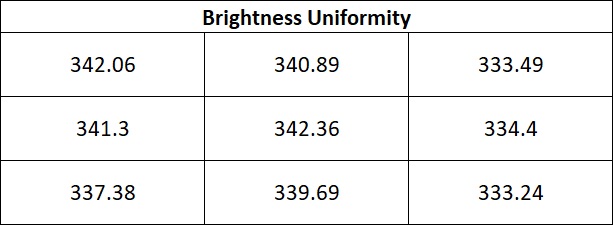
Brightness is pretty good with around 342.36 cd/m2, which should allow the notebook to be used outside despite its lack of anti-glare coating. Brightness uniformity across the panel is superb with only 2.6% deviance from the highest in the middle against the lowest at the bottom right.

Audio pumps out of bottom-firing speakers within the chassis certified by Harman/Kardon. Vocal clarity is surprising as vocals come out clear while mids are quite clean. Bass can be a bit weak especially when the laptop is raised as the speakers rely on some kind of reverberance for punchier low frequencies.
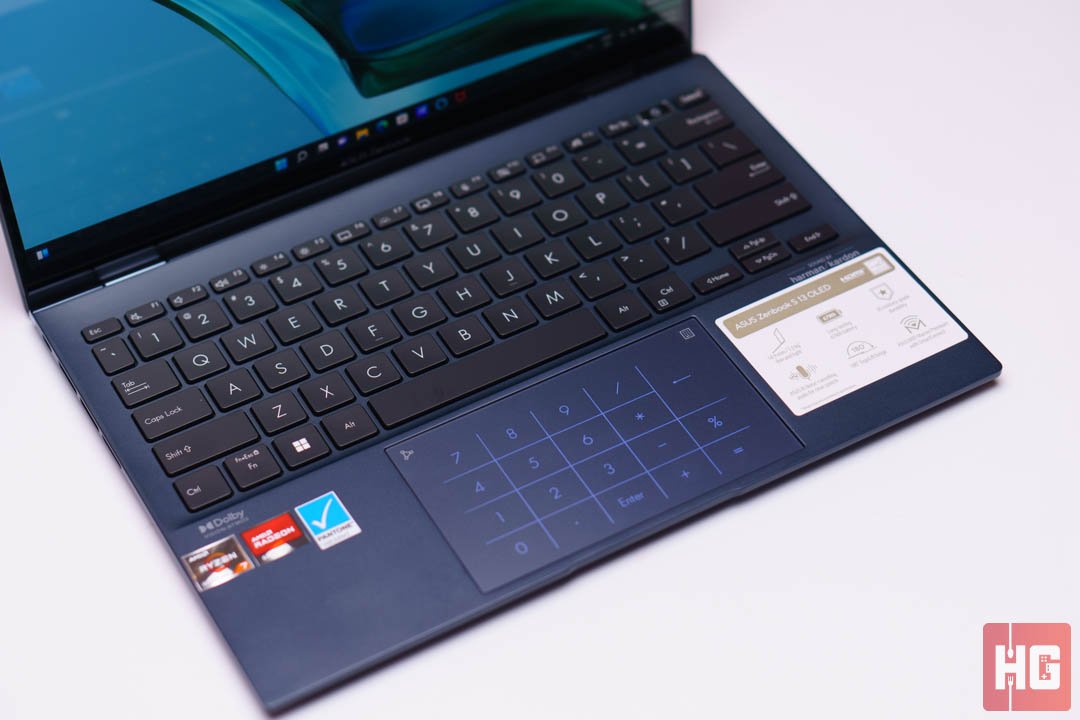
The ZenBook S 13 (2022) has a typical 70% keyboard layout with chiclet switches that support three levels of white backlight. The keys are comfortable to type on and have decent tactility. They are silent as there is some level of cushioning when bottoming out. The leftmost keys are slightly shorted due to the smaller body, so some level of adjustment is needed if you’re coming from a full-sized keyboard.
The touchpad is positioned at the middle and has a smooth finish. Tracking is great and the buttons have good tactility. The NumberPad 2.0 is integrated for a dedicated number pad for those who need it while still allowing the use of the mouse. It is easily toggled by long pressing its icon at the top-right of the touchpad.
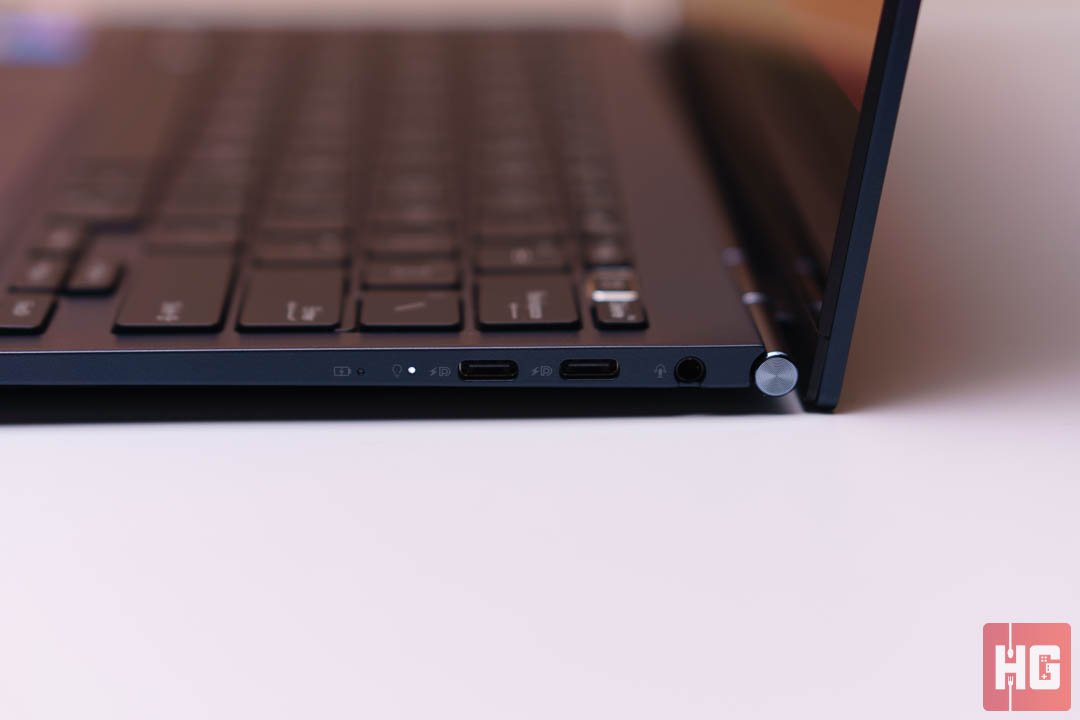
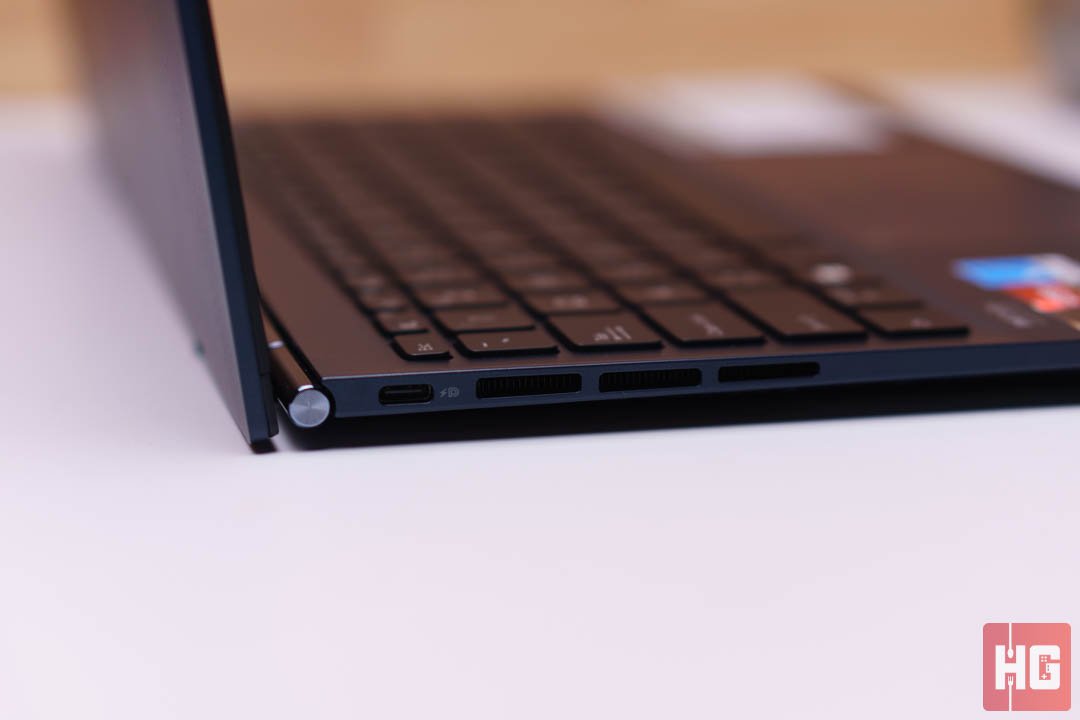
The notebook comes with three USB 3.2 Gen2 Type-C ports (one at the left, two at the right) and a 3.5mm audio jack. All Type-C ports are compatible with charging and external displays.
It doesn’t come with a Type-A port or a dedicated HDMI connection. As mentioned, however, it does come with a USB Type-A adapter in the box. Those who want more Type-A ports or an HDMI port will need to use a third-party adapter.
The device does not support Thunderbolt 4 connectivity on its USB Type-C ports. It’s not too much of a downside for those who will use the device for office-type workloads or select rendering techniques. It would be nicer if it did support it to get additional GPU horsepower for graphically-intensive workloads like gaming.
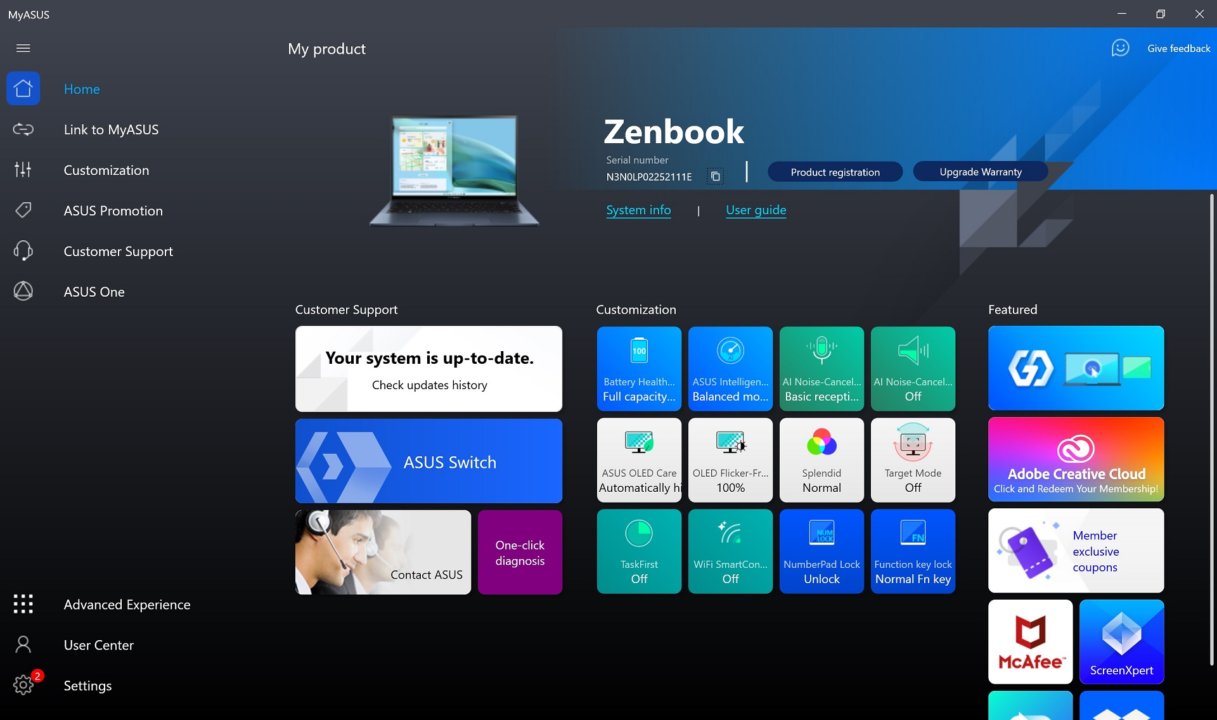
The notebook has Windows 11 Home installed, so users don’t need to manually upgrade the OS. Bloatware is kept to a minimum. Pre-installed software are mostly Windows programs though the notebook does come pre-packaged with McAfee.
ASUS apps are pre-installed like MyASUS. The app acts as a singular app to control and monitor certain aspects of the notebook. Users can change power options, performance parameters, and monitor system statistics of the device. It can also alert users to ASUS promotions for programs.

The ASUS ZenBook S 13 OLED (2022) can be equipped with an AMD Ryzen 5 6600U with a Radeon 660M or a Ryzen 7 6800U with a Radeon 680M. Its LPDDR5 can be configured to either 8GB and 16GB capacities. We have for this test is the higher SKU with a Ryzen 7 6800U with 16GB LPDDR5 RAM.
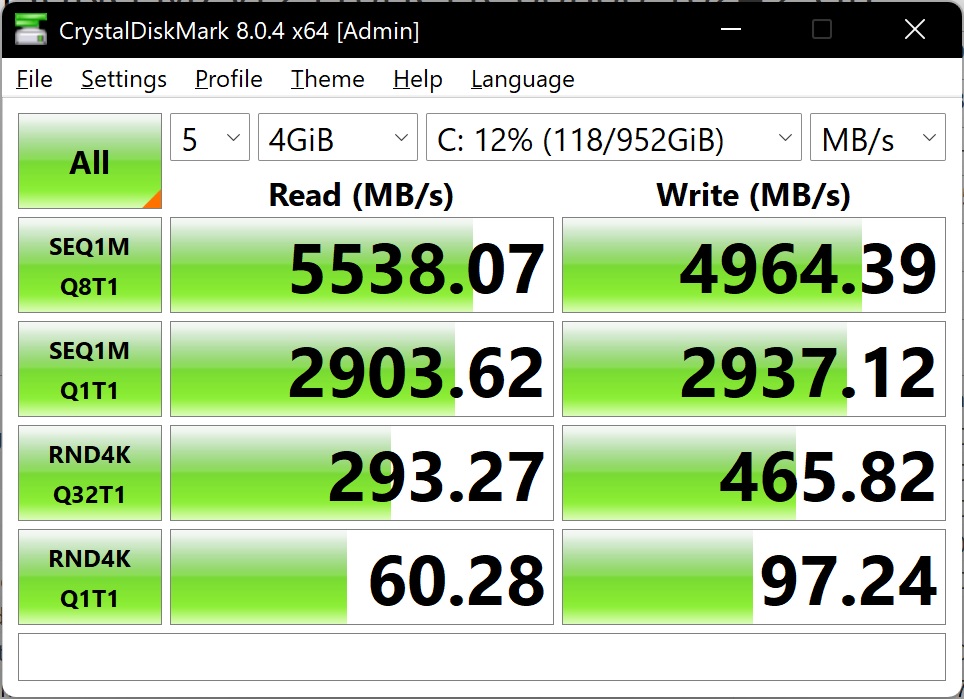
Storage can be a 512GB SSD for the Ryzen 5 variant and a 1TB SSD drive for the Ryzen 7 version. The SSD is a Samsung MVZL21T0HCLR PCIe 4.0 NVMe M.2 SSD. Performance is definitely an upgrade from PCIe 3.0 SSDs with sequential read and write speeds reaching 5,538MB/s and 4,964MB/s, respectively.
The notebook will run through a gamut of tests including synthetics and rendering for the CPU and synthetics and light gaming for the GPU.
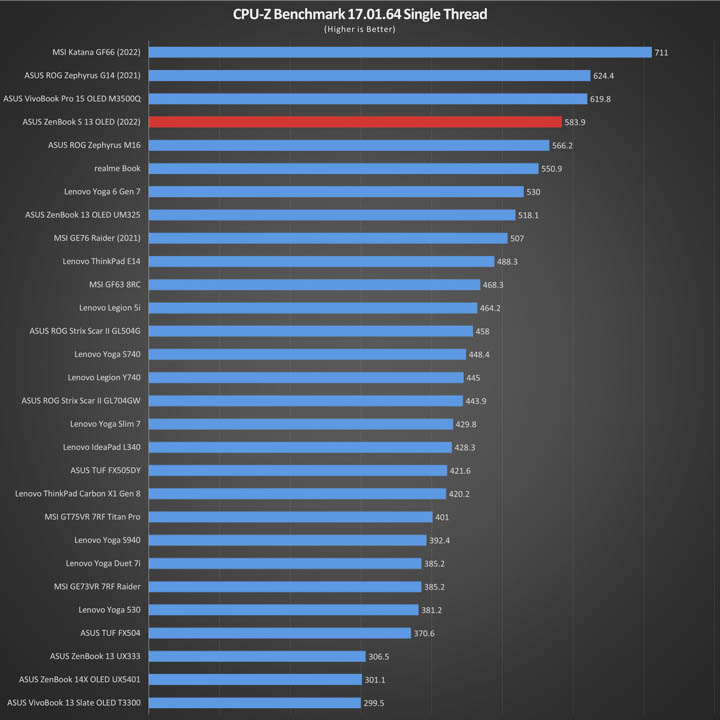
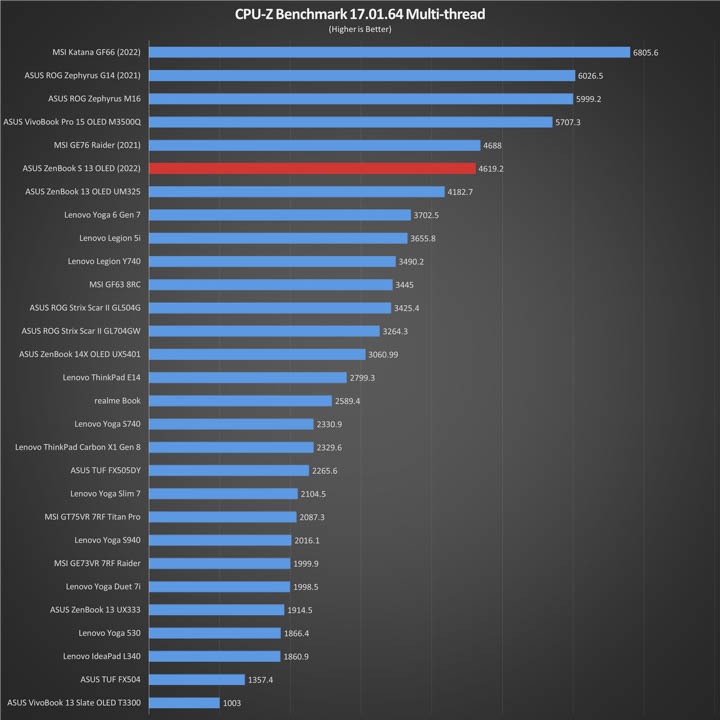


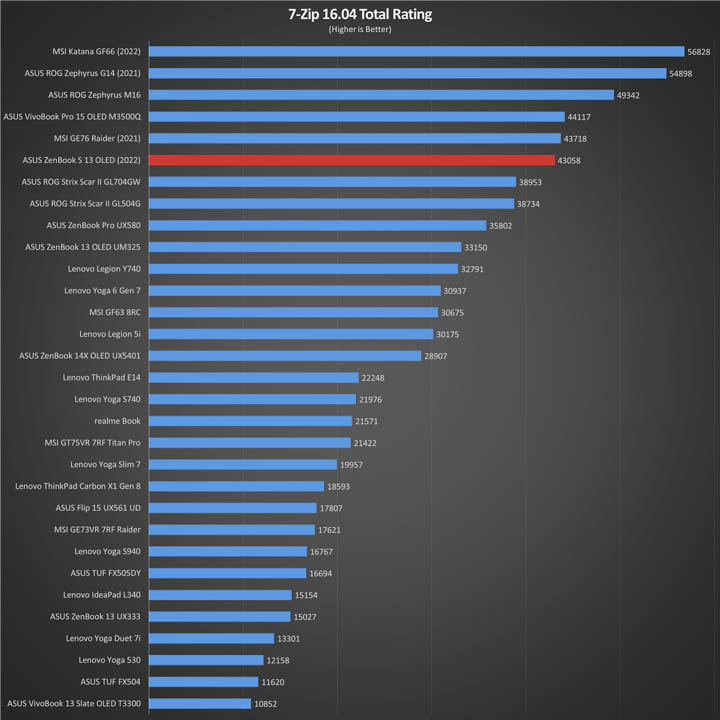
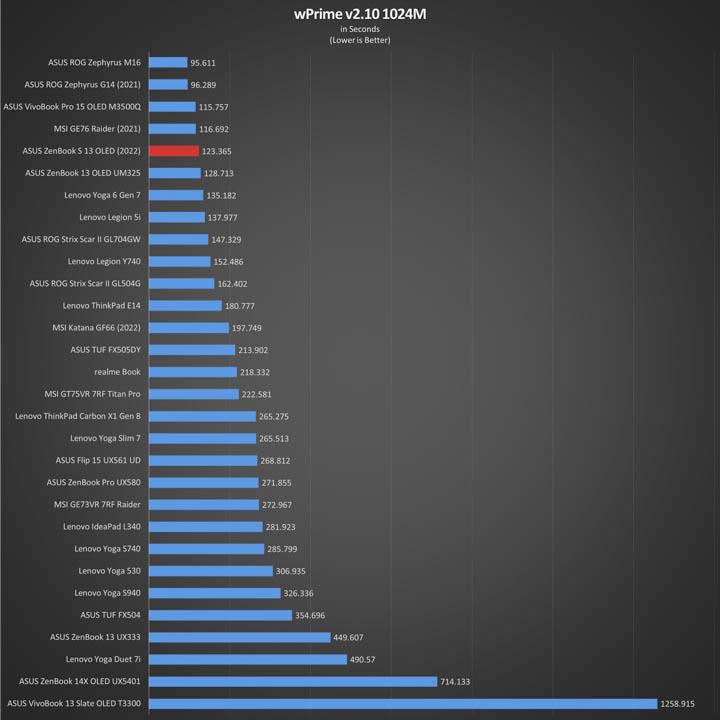



AMD’s Zen 3+ architecture remains as impressive as ever as the ASUS ZenBook S 13 OLED (2022) produces splendid numbers for an incredibly thin device. It consistently places at the top 1/3 on the charts allowing fast performance in both synthetic tests and rendering workloads.


GPU performance is equally impressive as the CPU. While it won’t break any records on synthetic tests, playing graphically-light games like competitive titles such as Rainbow Six Siege or casual games will be possible. It can even pump frames more than 100fps at 1080p so long as settings are kept at low.

Cooling isn’t a problem on the ZenBook S 13 (2022). Despite its thin profile, it manages to hover around mid-40°c when idle. The chip will boost to a peak of 90°c when both GPU and CPU are stressed with heavy workloads, but that’s to be expected. Heavy CPU rendering, on the other hand, will stress the it to an average of 77°c.
Battery life is impressive for such a thin device. Light workloads will allow the notebook to last for around 9 hours on a single charge. Charging should take around an hour and half when charging from completely empty. The device does support USB PD charging, so it can be charged via supported power banks.
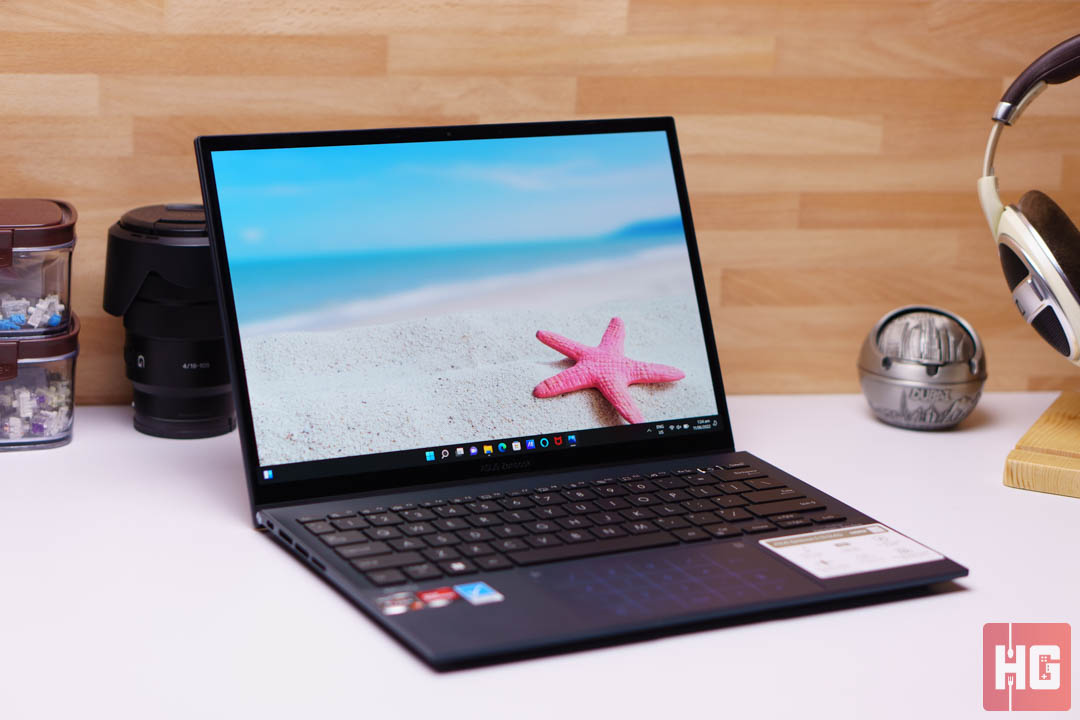
There’s very little to complain about the ASUS ZenBook S 13 OLED (2022). It delivers the numbers thanks to the pairing of its AMD Ryzen 7 6800U chip and 16GB LPDDR5. The display is incredible and detailed like most of ASUS’ premium OLED notebooks and it packs all these in a portable frame.
Thunderbolt 4 is a missed feature as it adds more expansion options to the notebook. The lack of a conventional USB Type-A or even SD card readers might be missed by some people as well.

Overall though, the ASUS ZenBook S 13 OLED (2022) is a well-rounded notebook with impressive performance, lightweight yet premium build, and a lovely screen. Those who are looking for a powerful yet portable ultrabook should have the notebook on their radar, which is why we are giving it our seal of approval.
ASUS ZenBook S 13 OLED (2022) Price and Availability
The ASUS ZenBook S 13 OLED (2022) is priced at USD 1,299 globally for the Ryzen 7 6800U version with 16GB of LPDDR5 RAM.
In the Philippines, the ZenBook S 13 OLED (2022) is priced starting at PhP 63,990 in the Philippines. Two variants are available: an AMD Ryzen 5 6600U model with 8GB LPDDR5 RAM and 512GB NVMe SSD for PhP 63,990 and an AMD Ryzen 7 6800U version, 16GB LPDDR5 RAM, and 512GB NVMe SSD for PhP 76,990. Both are bundled with a free lifetime copy of Microsoft Home Office Home and Student 2021.
The notebook can be had through ASUS concept stores, Lazada, Shopee, and authorized retailers nationwide.
